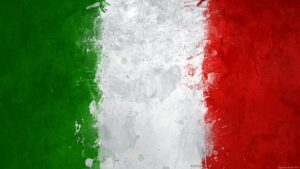Expat Tales: There’s a different ‘flow to life’ in Italy
4 min readExpat Tales is a Stuff Travel series featuring Kiwis who’ve made new lives for themselves overseas. If you’d like to take part, email us at travel@stuff.co.nz
What inspired your move, and how long have you been there?
Italia has been a place I’ve always loved. In 2018 I visited and loved the experience, so I figured I’d give life a try here once I finished uni in 2020. I arrived just after Matariki this year and settled in Bologna.
Did it take long to settle in?
Kāo, not at all. Living in a new place has its stresses, that much is always true. There’s a different reo and flow to life, but I’ve found similarities between here and life in our corner of Te-Moana-nui-a-Kiwa/the Pacific.
What do you do there?
I’m a language teacher. I studied linguistics, Italian, and second language education at Te Herenga Waka, so it’s no accident I do what I do. Students come from everywhere to study here at Bologna university. I teach English, Italian per stranieri (for foreigners), and every now and then get to have a little wānanga over an espresso and share some reo Māori.
What are the biggest advantages of living there?
It’s Europe, so everything is on my doorstep. Bologna is a transport hub and the station in town has high-speed trains to most major parts of the country in less than four hours. Discounted same-day return tickets are an option with a little planning.
Any disadvantages?
Italian bureaucracy. Auē. It lives up to its reputation. You have to get the right person at the right counter at the right post office with the wind blowing in the right direction. That caused some stress, but it’s worth it.
How expensive is it compared to New Zealand?
The exchange rate isn’t great, so converting to euro is a bit depressing, but I’ve found the cost of living to be about the same back in Te-Whanganui-a-Tara. Housing here is a premium and lots of apartments have popped up on Airbnb. Unsurprisingly, it’s something that hasn’t gone down well if the street art around the city is any indicator.
How do you spend your spare time?
Plan trips to the next place on my list, write, or dive into my music. I also hang out or go on hīkoi with friends. There’s always something to experience, a new café to try, or some small detail down a side street I missed last time.
What is the local delicacy and would you recommend it?
The kai here is tino pai and I can only put it down to the aroha that goes into making the kai and the quality of the ingredients. Lots of cheeses, cured meats, different types of pasta dishes, and wines come from Bologna and Emilia-Romagna. Lasagna is well worth trying here, but for me, it’s anything alla Gorgonzola. Pignoletto is also something I would recommend if you like wine.
Easiest way to get around?
Some of the local street art.
One of my goals here is to try and live responsibly to look out for Papatūānuku (the land) so all of my travel is done on foot or by bike. The city has bikes available around the city which is covered by bike lanes and drivers are mindful of people on bikes so it’s quite safe and very convenient.
Best after-dark activity?
There’s an old saying that cities change at night. Bologna can feel like a different place at night, and in some sense the place comes more alive. Restaurants, cafés, and locals spill out into the streets when the traffic dies down and it breathes a new, different life into the city so the best way to find something to do is to go exploring.
Best time of year to visit?
Bologna isn’t usually the first place people think of when they think of Italia, which is the thing I love the most. Other cities can feel like tourist towns featuring locals, but Bologna feels more like a local town featuring some tourists. If a more authentic vibe is what you’re looking to experience, autumn or spring are the best times to visit.
What are the top three things you recommend visitors check out?
Autumn or spring are the best times to visit.
One of my favourite places is the Santuario Madonna di San Luca, often just referred to as San Luca. The views at the top are breathtaking, on par with Ōtarikākā/Mt Kaukau in Te-Whanganui-a-Tara. San Petronio is also a highlight. Entry is free, but be aware of the Italian tikanga (customs) with their wāhi tapu (sacred places). Lastly, do some research into the Seven Secrets of Bologna. It’s definitely worth it if you’re down for a…cheeky adventure.
Family and friends aside, what do you most miss about home?
Tō tātou reo, our language. Nothing reminds me of te mahana o te haukāinga (the warmth of home) like the waiata we sang at kapa haka practice or when we performed. On the days when I need cheering up, Kua Rongo Mai Koe or Ka Pīoioi always take the edge off.
There’s also te hau. Something about the steady wind of Te-Whanganui-a-Tara that is so comforting. Those days when we get a breeze are some of my favourite because it reminds me of home. My last mihi goes to the sea. I never knew how much I would miss being near water. Thankfully wherever I am in the world, te marama, the moon, doesn’t change and keeps me feeling connected to home.



